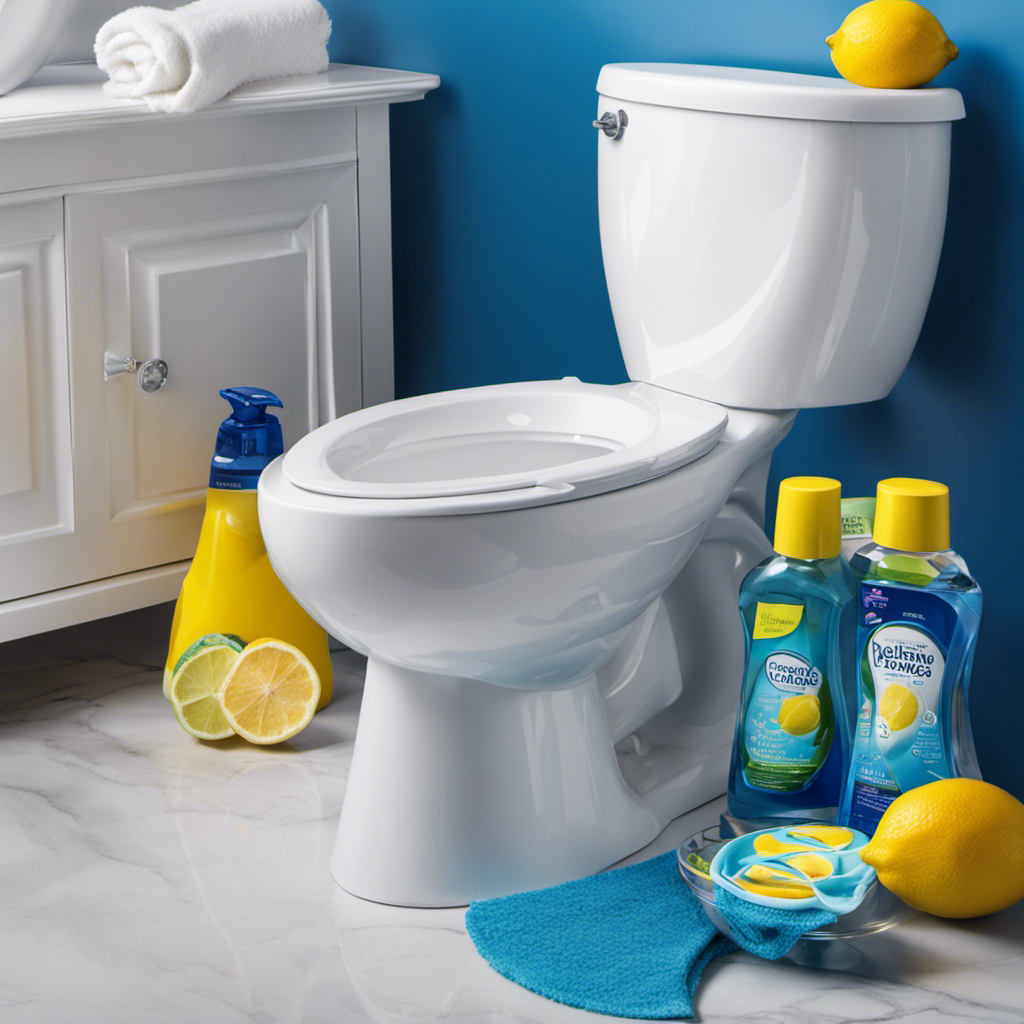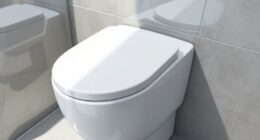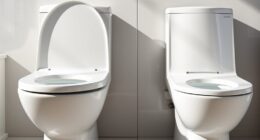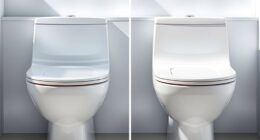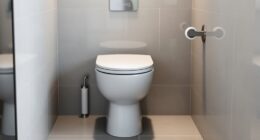Have you ever wondered what really goes on when we flush water down the toilet? Well, let’s dive into the fascinating world of wastewater management together.
When we hit that flush button, the flushing mechanism springs into action, sucking water and waste into the trap. Gravity then takes the reins, guiding the water through the intricate network of pipes until it reaches the sewage system.
From there, it’s a journey of treatment and disposal, ensuring the safe and efficient management of our wastewater. Let’s explore this process step by step.
Key Takeaways
- The flushing mechanism initiates waste removal from the toilet bowl and regular maintenance is necessary for optimal performance.
- The trap, also known as the P-trap, retains water to prevent odors and gases from entering the bathroom and regular plumbing maintenance is essential to check for blockages or leaks.
- Gravity and hydraulic pressure help move water and waste through the pipes, and clogs can be cleared using declogging techniques.
- The sewage system separates solid waste from water and treats it to remove impurities before releasing treated water back into the environment. Wastewater treatment plays a vital role in protecting the environment from the negative impacts of wastewater discharge.
Flushing Mechanism Activates
When we flush water down the toilet, the flushing mechanism activates, initiating the removal of waste from the bowl. The flushing mechanism consists of several components working together to ensure efficient operation.

As we press the flush handle, a lever connected to a chain lifts the flapper valve, allowing water to flow from the tank into the bowl. This sudden rush of water creates a force that pushes the waste through the trapway and into the sewer line.
It’s important to note that proper maintenance of the flushing mechanism is crucial for maintaining toilet bowl cleanliness. Regular cleaning and inspection of the components can prevent clogs and ensure optimal flushing performance.
Additionally, water conservation is another key consideration. Modern toilets are designed with water-saving features, such as dual-flush options or low-flow mechanisms, which help reduce water consumption with each flush.
Water and Waste Get Sucked Into the Trap
As we flush water down the toilet, the powerful suction created by the flushing mechanism pulls both water and waste into the trap. This is a crucial step in the process of waste removal and proper functioning of the toilet.
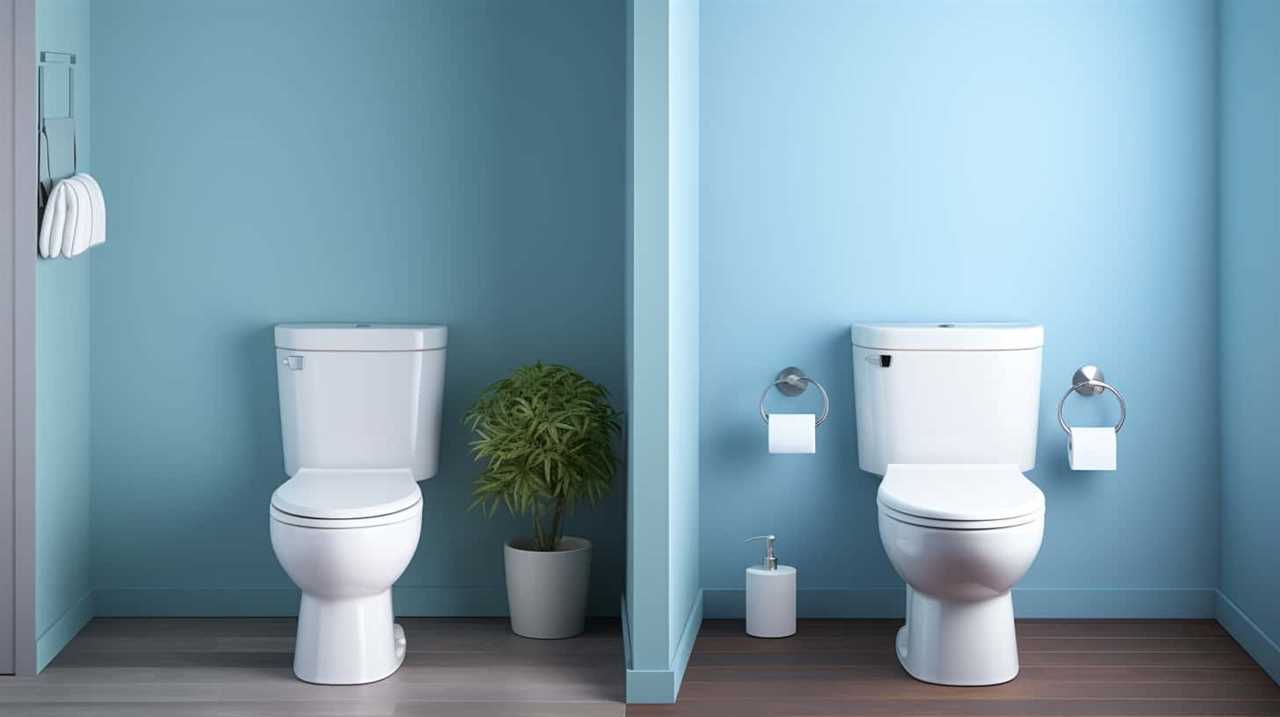
The trap, also known as the P-trap, is a curved section of the plumbing system that’s designed to retain a small amount of water. This water creates a seal, preventing foul odors and gases from entering the bathroom. Additionally, the water flow helps to push the waste through the pipes and into the sewer system.
It’s important to ensure that the trap is functioning properly to maintain the integrity of the plumbing system. Regular plumbing maintenance, including checking for any blockages or leaks in the trap, is essential for the overall efficiency of the toilet and the prevention of any potential issues in the future.
Gravity Takes Over as Water Flows Through the Pipes
After the water and waste are pulled into the trap, gravity takes over as it flows through the pipes. As the water descends, it’s subject to the effects of hydraulic pressure, which helps to propel it forward. This pressure is created by the weight of the water above and the force exerted by gravity.
The pipes are designed to facilitate the smooth flow of water, minimizing any potential obstructions. However, in some cases, clogs may occur, blocking the flow of water. Declogging techniques such as using a plunger or a drain snake can be employed to clear these obstructions and restore the flow.
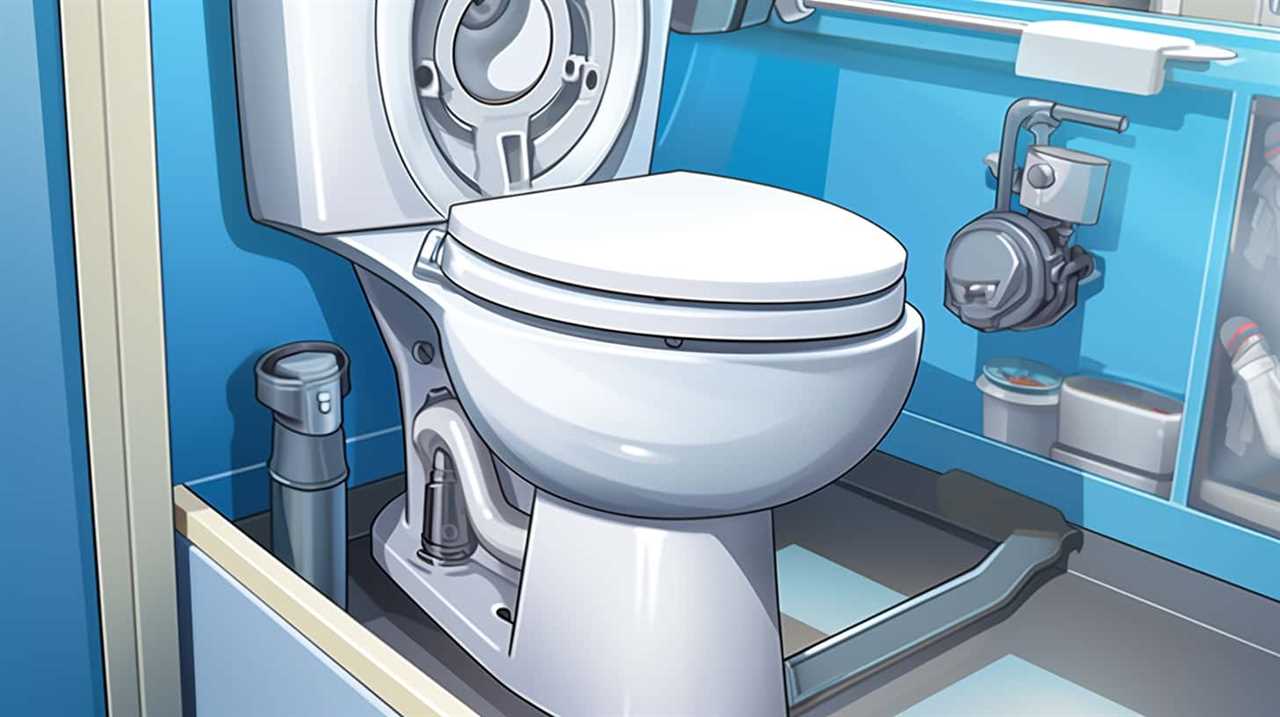
Once the water and waste have successfully traversed the pipes, they reach the sewage system, continuing on their journey for treatment and disposal.
Water and Waste Reach the Sewage System
Once the water and waste have successfully traversed the pipes, they make their way into the sewage system for further treatment and disposal. Sewage treatment is a crucial process that ensures the removal of harmful contaminants and protects the environment.
The sewage system consists of various components such as screens, grit chambers, and settling tanks that help separate solid waste from the water. This solid waste, also known as sludge, undergoes further treatment to remove any remaining impurities.
The treated water, on the other hand, goes through a series of processes, including biological treatment and disinfection, to remove harmful bacteria and pathogens. Once treated, the water is released back into the environment, sometimes even used for irrigation or industrial purposes, minimizing the environmental impact of wastewater disposal.
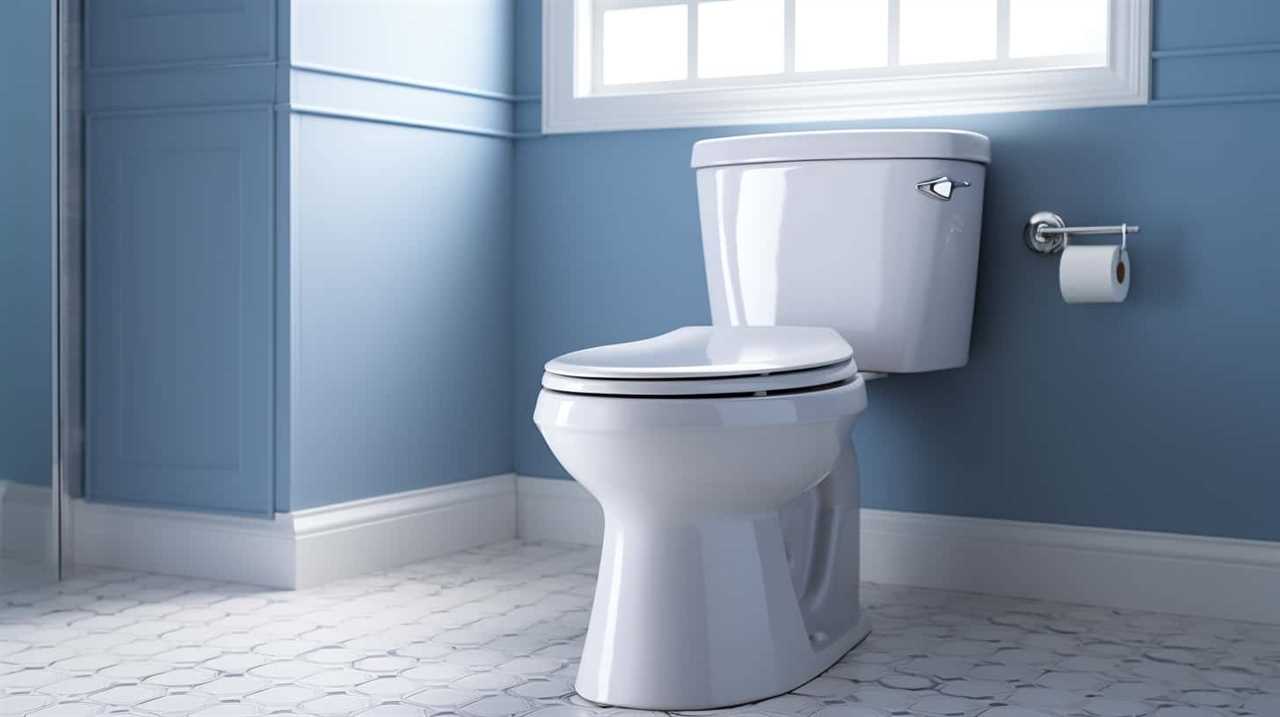
Treatment and Disposal of Wastewater
We continue the process by treating and disposing of the wastewater in the sewage system.
Wastewater treatment is a crucial step to ensure that harmful contaminants are removed before the water is released back into the environment. The treatment process involves multiple stages to achieve the desired level of purification.
First, the solid waste is separated from the water through a process called primary treatment, where the wastewater is allowed to settle and the solids are removed.
Next, the water undergoes secondary treatment, where microorganisms are used to break down organic matter and remove dissolved pollutants.

Finally, the water goes through tertiary treatment, which involves additional filtration and disinfection to further remove any remaining impurities.
It’s important to note that wastewater treatment plays a vital role in protecting the environment by minimizing the potential negative impacts of wastewater discharge.
Frequently Asked Questions
How Does the Flushing Mechanism in a Toilet Actually Work?
When we examine the toilet flushing mechanism, we find that it is a complex system designed to regulate the flow of water. Understanding how it works allows us to appreciate its efficiency and effectiveness.
Are There Different Types of Traps That Can Be Found in Toilets?
Different types of toilet traps exist, each with their own advantages. Understanding these designs is essential for mastery. We’ll delve into the technical details and inform you precisely about the various toilet trap options available.

What Happens if There Is a Blockage in the Pipes After the Water and Waste Have Been Flushed?
When there’s a blockage in the pipes after flushing, it can cause water to back up or overflow. We can use unclogging techniques like a plunger or drain snake to clear the blockage. Signs of a blocked pipe include slow drainage and gurgling noises.
Where Does the Sewage System Lead to After the Water and Waste Reach It?
After the water and waste are flushed, the sewage system leads to sewage treatment plants. At these facilities, the wastewater undergoes a series of processes to remove pollutants, ensuring a minimal environmental impact.
What Are the Different Methods Used for the Treatment and Disposal of Wastewater?
We can treat wastewater through various methods, including sludge treatment and wastewater recycling. Sludge treatment removes solid waste, while wastewater recycling purifies the water for reuse. These methods ensure efficient and environmentally-friendly management of wastewater.
Conclusion
So, when we flush water down the toilet, the flushing mechanism activates, causing water and waste to be sucked into the trap.
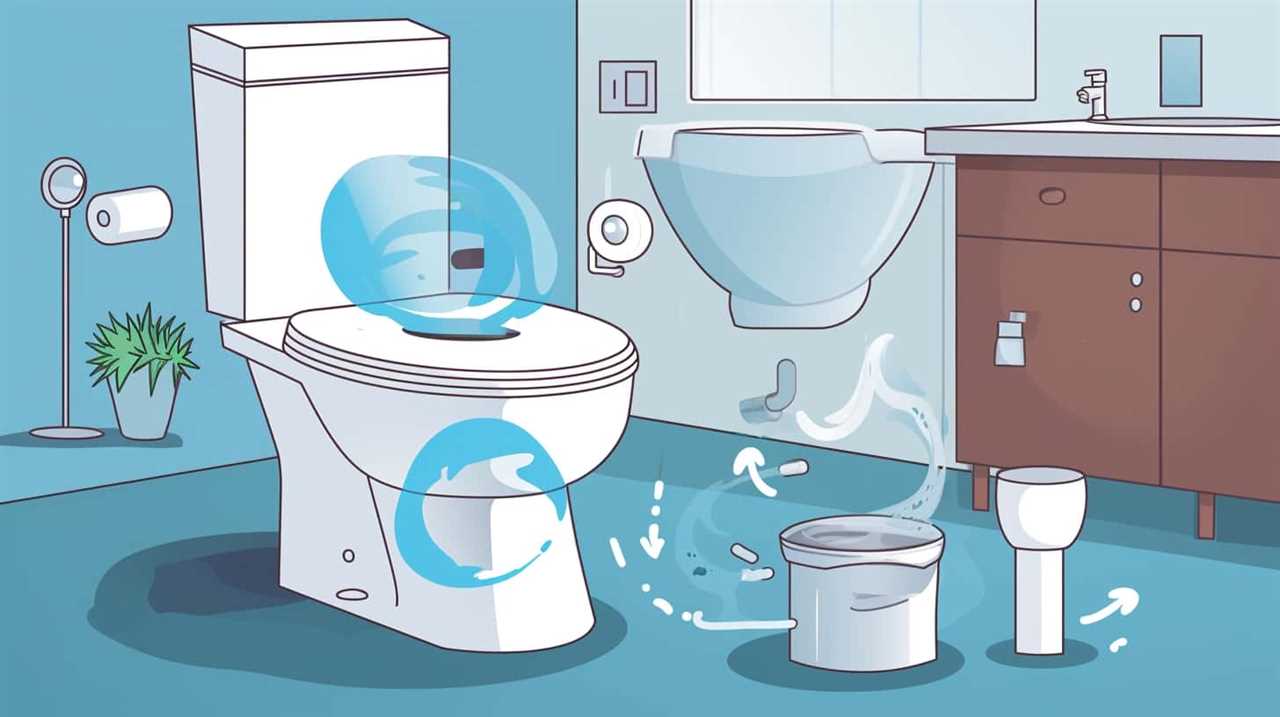
Gravity then takes over as the water flows through the pipes, eventually reaching the sewage system.
From there, the wastewater undergoes treatment and disposal.
Now, some may argue that flushing wastes a significant amount of water, but modern toilets are designed to be more water-efficient, reducing the amount of water used per flush.






